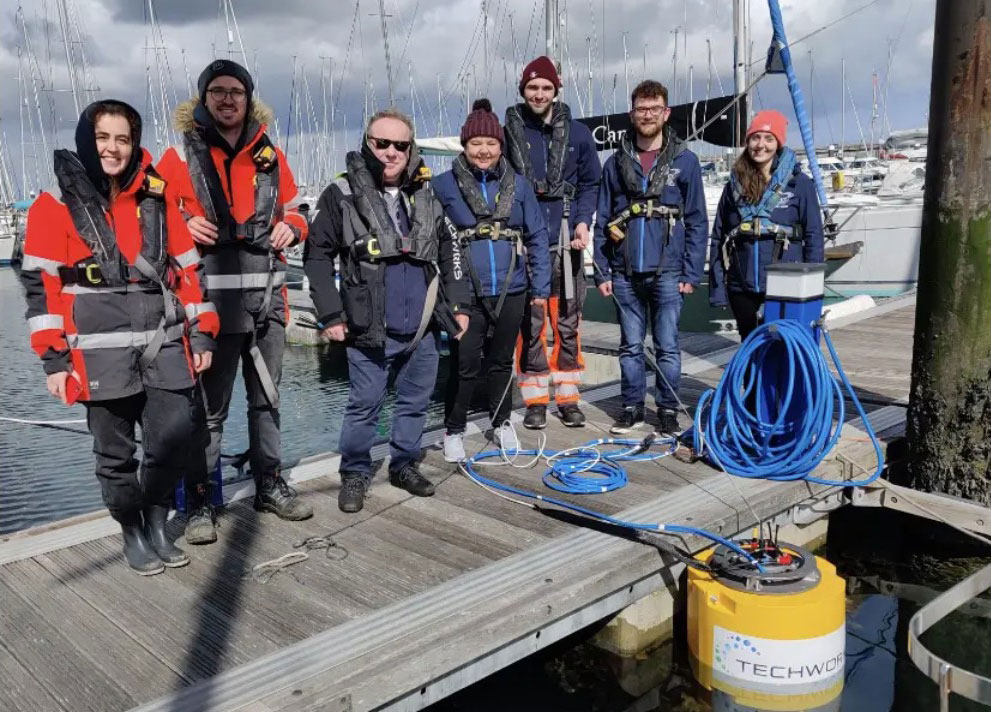The health of the oceans and coastal regions is crucial for sustaining the world’s ecosystems, regulating weather patterns, understanding risks, and shaping the global climate. However, human-induced climate change is driving rapid transformations, significantly disrupting oceanic systems and leading to biodiversity loss and habitat destruction. As part of the United Nations Decade of Ocean Science for Sustainable Development (2021–2030), there is an urgent need to advance ocean science and monitoring technologies to better understand these changes and develop effective strategies for mitigation and adaptation.
Scientific innovation plays a key role in monitoring and analyzing ocean activity with greater precision, providing critical insights to inform policy and conservation efforts. Water quality indicators such as chlorophyll-a (Chl a), dissolved organic matter (DOM), and turbidity can be effectively monitored using sensors via fluorescence, scatter, or absorption. However, to support the Ocean Decade’s mission of generating actionable knowledge for ocean sustainability, these sensors must be both durable enough to withstand harsh oceanic conditions and user-friendly for practical application. Strengthening ocean science and monitoring capabilities is essential for protecting marine ecosystems and ensuring the long-term health of our planet.
Chlorophyll a (Chl a) is a critical ocean variable, providing insights into the abundance or deficiency of dissolved nutrients like phosphorus and nitrogen, dissolved oxygen levels, and the overall health of aquatic ecosystems. It is a key indicator of phytoplankton biomass, which contributes to algal biomass, net primary production leading to an increased risk of the development of harmful algal blooms (HABs). Chl a is typically measured using optical methods, such as absorption at specific wavelengths or fluorescence. Dissolved organic matter (DOM), a complex blend of decomposed plant material, bacteria, and algae, is found in all natural aquatic environments. Measuring the quantity and composition of DOM is crucial, as it serves as a key source of bioavailable organic carbon and provides valuable insights into the health of aquatic ecosystems. Similarly, turbidity—the reduction in water clarity due to light absorption, reflection, or scattering—often indicates the presence of pollutants or suspended particles. Together, these parameters play a vital role in assessing and monitoring the state of aquatic environments.
In collaboration with TechWorks Marine and funded by Enterprise Ireland, researchers at DCU have developed cost-effective, easy-to-deploy water sensors for continuous monitoring of chemical and physical parameters in coastal waters. This innovation is part of the Advanced Water Monitoring System (A-WaMS) project, supported by Project Ireland 2040’s Disruptive Technologies Innovation Fund.
The development and preliminary testing of the optical head marine sensor were designed to detect optically active constituents in the marine and coastal environments. The sensor system features an LED array with wavelengths: 280–850 nm and two CMOS spectrometers, enabling the detection of key optically active marine parameters such as turbidity, dissolved organic matter (DOM), chlorophyll-a (Chl-a), and petroleum compounds. It operates in multiple modes—absorption, scatter, fluorescence, and backscatter—to gather comprehensive environmental data. To combat biofouling, UV LEDs are integrated into the sensor to prevent organic buildup on the lenses. The housing and mounting components, designed using advanced 3D printing techniques, ensure watertight integrity and durability in harsh marine conditions.
The sensor’s analytical performance was evaluated using standards for key parameters such as turbidity, dissolved organic matter (fDOM), petroleum hydrocarbons, and chlorophyll-a (Chl-a). When compared with commercial devices like the YSI EXO 3 multiparameter sonde, the sensor demonstrated strong sensitivity and accuracy. For turbidity, measured using both scatter and transmittance modes, performing comparably to commercial sensors but with a slightly limited detection range. Fluorescence-based measurements for fDOM and petroleum hydrocarbons were effective, with LEDs designed for shorter wavelengths showing higher sensitivity. Chlorophyll-a was successfully measured in both extracted and in-vivo forms, highlighting the sensor’s capability for detecting fluorescence signals.
Across multiple tests and trials, the sensor demonstrated excellent precision and showed strong agreement with established commercial instruments, reinforcing its potential as a reliable tool for environmental monitoring. Itshigh performance in various conditions highlights its suitability for widespread deployment in both research and practical applications.
The developed optical head offers a versatile, cost-effective solution for monitoring multiple water quality parameters in real time, providing critical data for assessing marine and coastal ecosystem health. By enabling continuous and accessible water quality assessments, this technology enhances our ability to detect changes in environmental conditions more efficiently and respond proactively to potential threats.
The development of such low-cost, high-performance sensors is essential if we are to achieve the vision of comprehensive and sustained monitoring of our marine and coastal environments. Scalable and affordable monitoring solutions are key to protecting biodiversity, preserving ecosystem health, and supporting global initiatives ensuring that our oceans remain resilient for future generations.


Recent Comments